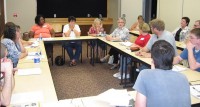 Writer Debbie Boen offers Clarksville Online readers a view of the participating authors in the recent Clarksville Writers Conference at APSU. Each author discusses the work, the ideas and influences of their writing, and suggestions for aspiring writers.
Writer Debbie Boen offers Clarksville Online readers a view of the participating authors in the recent Clarksville Writers Conference at APSU. Each author discusses the work, the ideas and influences of their writing, and suggestions for aspiring writers.
Barry Kitterman: Editor, playwright, professor of literature and author of The Baker’s Boy
 Always exposing Clarksville to creative writing through his classes at APSU and the visiting writers series is Barry Kitterman. He told us the background of and read a passage in his book, The Baker’s Boy. It is a story set in Belize where we explore the world of a school teacher Tanner Johnson, who is in the Peace Corp. Taking the first steps into the school Tanner saw two boys fighting and it wasn’t even breakfast yet. He sees a boy disciplined by being beaten with a rope. The 15 boys in his class are wild birds suddenly in a cage when they are indoors. Out doors they re-energized as if fingers were in sockets. Tanner is a man who is painfully aware of his personal limitations and who, in present time, is incapable of being very responsible because of the doubt in himself. This is his story of how the past follows him.
Always exposing Clarksville to creative writing through his classes at APSU and the visiting writers series is Barry Kitterman. He told us the background of and read a passage in his book, The Baker’s Boy. It is a story set in Belize where we explore the world of a school teacher Tanner Johnson, who is in the Peace Corp. Taking the first steps into the school Tanner saw two boys fighting and it wasn’t even breakfast yet. He sees a boy disciplined by being beaten with a rope. The 15 boys in his class are wild birds suddenly in a cage when they are indoors. Out doors they re-energized as if fingers were in sockets. Tanner is a man who is painfully aware of his personal limitations and who, in present time, is incapable of being very responsible because of the doubt in himself. This is his story of how the past follows him.
Barry’s poetry writing shapes his choice of words and one imagines a second meaning to many phrases. Each part of the story makes a vivid scene in my mind. Barry was in the Peace Corp in Belize. He taught at a school for children.
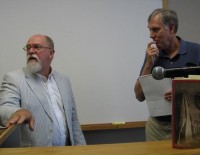 Barry said that what you may think is absolutely ridiculous in this story is probably completely true and what seems true is probably made up. This book was a ten year writing process. When asked if it has to be difficult to write a book, Barry said he believes that poets put a lot of thought into each word and that should be true of fiction writers too.
Barry said that what you may think is absolutely ridiculous in this story is probably completely true and what seems true is probably made up. This book was a ten year writing process. When asked if it has to be difficult to write a book, Barry said he believes that poets put a lot of thought into each word and that should be true of fiction writers too.
Barry admitted that part of the time working on a historical novel like this is sorting out the emotions and affect the experiences had on him. Also I found out that Barry’s main character does a lot of things that Barry never did. In the main character, Tanner, Barry is working out not only his experiences in Belize but why other people did what they did. He puts himself in their shoes.
Like the ghost that haunts main character Tanner, Barry’s well chosen words paint haunting images.
Besides teaching at APSU and having an active family life, Barry has hosted Bread and Words at APSU for 14 years running to raise money for Loaves and Fishes. He is a Blues musician and writer. He will be in the Southern Festival of Books in Nashville this October.
Sonny Brewer: Author of The Poet of Tolstoy Park and editor of Stories from the Blue Moon Cafe: An Anthology of Southern Writers.
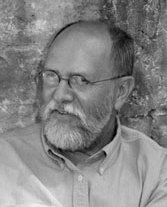 Known to be quite a character and an easy talker (tells a two day story that could have been told in four hours), lively Sonny told us the story of how he fell into writing The Poet of Tolstoy Park. He became fascinated with a Henry Stewart, a man who died several years before Sonny was born. Sonny writes Henry’s story which starts when Henry is told by his doctor that he has a short time to live. Henry abandons wearing shoes and moves to warm Alabama. One thing he does there is build a round house out of cement blocks.
Known to be quite a character and an easy talker (tells a two day story that could have been told in four hours), lively Sonny told us the story of how he fell into writing The Poet of Tolstoy Park. He became fascinated with a Henry Stewart, a man who died several years before Sonny was born. Sonny writes Henry’s story which starts when Henry is told by his doctor that he has a short time to live. Henry abandons wearing shoes and moves to warm Alabama. One thing he does there is build a round house out of cement blocks.
Sonny’s research of Henry Stewart gives up interesting and bizarre things about Henry. Sonny was able to lease the still existing round house so he could restore and study it. From newspaper articles, writings and dates of the cement blocks made by Henry, Sonny surmised that Henry had a major transformation (wake-up) which changed his life.
Listening to the story of how Sonny researched and wrote about Henry, one can’t help feeling they are made of similar stuff. Sonny sees the beauty in this human spirit who transformed religious studies to a love of nature. The book quotes Chief Seattle several times. He would have known about him, says Sonny, and he was a lover of Tolstoy, who was a fan of Henry George. You can google it, says Sonny to most questions. Sonny has had similar transformations in his life and people have even told him that maybe he is the reincarnation of Henry Stewart. Sonny won’t go that far but cannot explain his fascination with Henry’s life.“Takes one to recognize one”, I surmise.
In another session Sonny talked about a nonfiction book he wrote about his dog being lost. It was such an involved episode in his life that Sonny’s editor told him to write a book about it. Sonny says that writing nonfiction is more difficult than fiction and you still have to be careful about changing the names and such.
Sonny’s trouble these days is that his editor is waiting for him to “get to” his writing. Sonny’s editor is ready to promote a book that Sonny hasn’t written yet. Knowing that most writers are struggling to get noticed, Sonny knows he is living well. Having a deadline helps him get ‘er done. He tells us to believe in saying “I’m going to write a masterpiece and I’m going to do it in 6 weeks.” Just do it. On cue from his editor, he rewrote his Cormac book in a month. He got his start in writing when a college teacher told him that what he had written was sweetness and light. That convinced him to change his major to journalism. Getting together with other writers has fueled him tremendously. While speaking at lunch he said his writing group had just picked a better title to another book he is writing.
Suzanne Hudson: In the Dark of the Moon
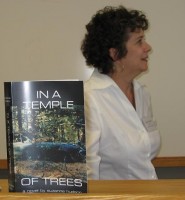 Suzanne Hudson said she started writing books because Sonny bugged her into it. While at college together, she had won prizes for her writing including first place in a Hackney Literary award with 3,000 entries. Winning scared her out of writing and 30 years later Sonny talked her into writing again. Her books have a dark side, she said. She cannot write sweet stories, even when she tries. Her mom begged her to write a nice story and it started out that way, but then the dark side moved in. Coming from a profession of being a guidance counselor at a Middle School, Suzanne starts writing and the story takes over.
Suzanne Hudson said she started writing books because Sonny bugged her into it. While at college together, she had won prizes for her writing including first place in a Hackney Literary award with 3,000 entries. Winning scared her out of writing and 30 years later Sonny talked her into writing again. Her books have a dark side, she said. She cannot write sweet stories, even when she tries. Her mom begged her to write a nice story and it started out that way, but then the dark side moved in. Coming from a profession of being a guidance counselor at a Middle School, Suzanne starts writing and the story takes over.
It sounded to me as if she asks a question of the character and the answers come to her. Suzanne has written In the Dark of the Moon (Secrets and Lies Exploring the Cross Generational Darkness) and In a Temple of Trees. She says her books are not for the faint hearted. There’s even (bad) language. In a Temple of Trees involves a boy witnessing a murder.
Most of her stories involve big secrets. We all have secrets Suzanne says. It’s a fun exercise to just start writing about that.
Suzanne’s secret now is that she hates to present her books to the public. It makes her very nervous. Though that may have been true for her, none of her audience suffered. We laughed with her and followed her every word.
Suzanne has another writing name of Ruby Pearl Sapphire. Ruby is everything free that I secretly want to be, says Suzanne. Ruby has a low brow humor and insists that she knows what is best for her and for us. Ruby plans on writing such books as a child raising book titled: If you Insist on Having Little Monsters, at Least Raise Them Like This. And Pros and Cons of Thongs. Suzanne Hudson is the author of In a Temple of Trees, In the Dark of the Moon, and Opposable Thumbs.
Tracy Barrett: Advisor for the Society of Children’s Book Writers and Illustrators; author of nine plus books.
 Tracy Barrett started us off with an energized talk about writing for young adults and children. She was prepared with handouts, rapid fire information, and list of frequently asked questions with answers about this avenue of writing. She has an intense love of history and has written fiction and nonfiction. The handout listed essential bookshelf books like Children’s Writer’s and Illustrator’s Market by Writers Digest. Everything she said was so useful so we listened intently and I wrote furiously.
Tracy Barrett started us off with an energized talk about writing for young adults and children. She was prepared with handouts, rapid fire information, and list of frequently asked questions with answers about this avenue of writing. She has an intense love of history and has written fiction and nonfiction. The handout listed essential bookshelf books like Children’s Writer’s and Illustrator’s Market by Writers Digest. Everything she said was so useful so we listened intently and I wrote furiously.
Is it easy or difficult to get published in this area? She said it’s not impossible but it’s difficult. Between five and six thousand books are published a year, no one can estimate how many submissions are sent in. Even so, don’t worry so much about that number because editors have good quick judgment to sort out the “bad” stuff. Editors read submissions looking for reasons to title you an amateur, throw your letter out and get on to the next one. So don’t give them a reason. For example, in a submission letter do not say your children or grandma liked your book. Unless you are an educator, editors do not want to hear who liked it and saying that screams amateur.
Do you need an agent in this field? In the adult market, yes, definitely, she said. Any time you have contract questions an agent is so helpful. Her agent got her bigger advances and percentage of book sales, so she was worth that 15%. Agents are also drowning in submissions but when your agent sends in a submission to an editor, that editor may feel that there is a reason to be more interested. Submissions without an agent are also accepted all the time.
Tracy said that editors cannot tell us exactly what they want, but they do know what they do not want. For the 2- to 5-year-old group books are usually 200-500 words. If you are not an author/illustrator do not, in your submission, suggest an illustrator. If your submission is accepted, then you can suggest to your editor someone you know. Editors have files of illustrators just waiting to be picked. You do not have to worry about or pick your own illustrator.
Do not do rhyming picture books unless they are perfect rhymes. Read them out loud to make sure it reads well. Have someone else read it and every place they stumble, circle that and change it.
Editors do not like talking animals unless there is a reason for it. Peter Rabbit, for example, has to be a rabbit. If it can be a child instead of an animal, then it should be.
No talking body parts. Tracy laughed at this one; she didn’t know why it was such a problem.
The Middle Grade readers have two levels: early readers and middle grade. Know your audience. Young adult age 12 to college is the biggest category and has the most readers. Fifteen-year-olds have dilemmas that don’t match 10-year-olds. Don’t talk down to them. You can stretch the vocabulary. There is no topic you cannot touch. Murder, abuse, anything that is life experience. Length can be 30,000 words or twice that.
Barrett suggests having a critique group; nothing beats it. Share chapters with each other and get honest opinions back. In this field is it best to query editors first before writing? Tracy’s answer was straight: Write the Damn Book (WTDB)
Tracy filled us up with valuable information. She is a dynamic writer and speaker and she balances her writing and teaching Italian at Vanderbilt University by leaving her work at work and keeping her office and home completely organized. She said she is not naturally neat but she has no choice. Here is a list of books she has published: Anna of Byzantium; The 100-Year-Old Secret (Book I of “The Sherlock Files”); The Ancient Chinese World; On Etruscan Time; Growing Up in Colonial America; Virginia, Tennessee, and Kentucky in the series Celebrate the States; The Trail of Tears: An American Tragedy; “The Children’s Crusade”; and Cold in Summer.
Tracy is Advisor for the Society of Children’s Book Writers and Illustrators and organizes their fall conference in Nashville (this September 20 and 21) and she hopes to see all of us there.
I was once told by a mentor that if I needed to learn something, I should go to the children’s section of the library and get a book on it there. Children’s books are written to be understood and applied to life. I have never had a disagreement with that.
Poet Leigh Anne Couch: Managing editor of The Sewanee Review and author of Houses Fly Away
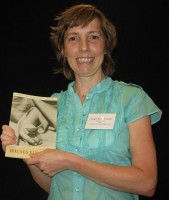 It was said earlier that poets are the masters of words. Using the least amount possible they describe feelings in a most powerful way. That is certainly true of Leigh Anne Couch. Her words and images flowed like fondue chocolate.
It was said earlier that poets are the masters of words. Using the least amount possible they describe feelings in a most powerful way. That is certainly true of Leigh Anne Couch. Her words and images flowed like fondue chocolate.
In Beast, she describes the pretty bird in his mouth that he would like to let go, let tongue out of its cage.
In Nest she describes a woman in the hospital who is hiding. Her tests show nothing. Outside the window is a hornet’s nest, the color of something dying for years.
Opposite of Helium (for Milton the beloved dog)
…Love was a helium balloon, in a room with open windows.
Leigh Anne told us that she used to have a thesaurus next to her at all times, looking for better words to use. But she wrote awful poetry and now instead she uses a dictionary, looking up the meanings and roots of words and finding satisfaction in their use.
Palm Reader
…See the crows hammering inside her chest?
To Be Fire
…I wanted the stones to wear me like a blouse.
Camel Stamp
…This camel has a very long neck to feel the shiver of words for a very long time.
Blas Falconer: Creative writing teacher at APSU and author of The Perfect Hour and A Question of Gravity and Light
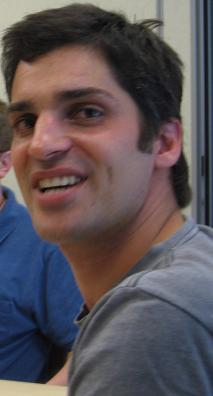 Blas had the chairs arranged in a square and asked each one of us why we were there. It immediately loosened us up. He gave us a handout of several types of poetry and we read each one. His point was that we don’t have to relate to or like every type of poem, but like looking at fine art, there is a style that we can relate to. And just like fine art where we don’t know the exact meaning that the artist is trying to convey, so it is with poetry. We did a writing exercise, taking a poem and changing the words to be our own. Blas does this type of writing when he hits a wall and can’t write anything.
Blas had the chairs arranged in a square and asked each one of us why we were there. It immediately loosened us up. He gave us a handout of several types of poetry and we read each one. His point was that we don’t have to relate to or like every type of poem, but like looking at fine art, there is a style that we can relate to. And just like fine art where we don’t know the exact meaning that the artist is trying to convey, so it is with poetry. We did a writing exercise, taking a poem and changing the words to be our own. Blas does this type of writing when he hits a wall and can’t write anything.
He asked each of us what we thought of the poems that he handed out.
Rita Read, who taught English for 27 years, noticed that no matter what people said about the poems, Blas was sure to validate their opinion. He wasn’t threatened if someone didn’t like a poem. He maintained that they could find some poetry that they would like. Rita said that if she were a college student she would take his class. When you have a teacher who loves what they do, it makes you want to love it too.
Blas commented that a good poem is someone having an epiphany. If you know where you are going when you start out, then you’re probably not going to do well. He said to let your insides speak. The mind makes amazing leaps and associations when we don’t try to control it. Bernis Terhune gave us a chuckle when she said that in her writing group they try to make everything perfect, and it drives her crazy.


